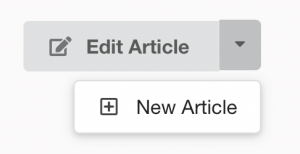Contribute to Drawdown Alberta Solutions Research
Be one of our amazing contributors that have stepped up to help gather research and share this knowledge!
Please note: no experience is necessary!
We encourage anyone to contribute!
Research Questions
Drawdown Alberta has identified 14 sections of different information that the research should include. Research will be ongoing as solutions evolve in the province but, as a starting place, the following basic research structure has been proposed so the Wiki has some consistency across solutions:
- Solution: What is the Drawdown Solution being researched? A brief overview of the solution in general. Consider the solution description from Project Drawdown. Provide 2-3 sentences with a description of the solution.
- Solution Applications in Alberta: What does the Drawdown Solution look like in Alberta? How the solution appears to present itself in Alberta, currently. If applicable, highlight elements of the solution that are more prominent in the province.
- Reducing Emissions: How does the Drawdown Solution reduce emissions? How the solution reduces (or would reduce) emissions in Alberta. What are the emission-reduction elements of the solution (directly or indirectly)?
- Application Status in Alberta: What is the Drawdown Solution’s application status in Alberta? What progress has Alberta already made toward this goal?
- Reduction Potential: What is the Drawdown Solution’s emission reduction potential (MtCO2e)? CO2 equivalent reduced / sequestered (2020–2050), reference any existing baseline measurements?
- Economic Impact: What is the Drawdown Solution’s economic impact (cost per MtCO2e)? Consider economic costs / benefits resulting from the solution.
- Life Cycle Emissions: What is the Drawdown Solution’s life cycle emissions? Explore the full life cycle of this solution including longevity of solution applications and tradeoffs.
- Co-Benefits: What is / are the co-benefit(s) of this particular Drawdown Solution in relation to other listed Drawdown Solutions? Explore potential or existing relationships with other solutions.
- Jobs and Training: What kind of jobs and training are relevant to the Drawdown Solution? Explore jobs, special knowledge, education, academic programs or capabilities the solution requires, supports and/or creates (including those already established).
- Partnerships & Organizations Working on Solution: What kind of Albertan partnerships / organizations are currently working on aspects of the Drawdown Solution (discussions, planning, implementation, etc.)? Solution impacts and involvement in the immediate and wider community. Partnerships that the solution may forge or requires.
- Indigenous Involvement: What kind of Indigenous involvement is there related to the Drawdown Solution? Explore participation or involvement of Indigenous community in the solution and how it may meet the demands of Indigenous knowledge.
- Regulatory Status in Alberta: What is the Drawdown Solution’s regulatory status in Alberta? Level(s) of government, if any, involved with the solution. Explore if regulatory changes are or may be required in order to be feasible.
- Further Implementation: What are the particular steps/actions needed in order to (further) implement this solution?
- Get Involved: What are ways to get involved in the Drawdown Solution? How can the individual reader take action towards this solution and where they can go to learn more? This section will allow Drawdown Alberta to explore and communicate opportunities for members to get involved with the particular Drawdown Solution.
- Overall Solution Priority for Drawdown Alberta
General Guidelines
- Keep it clean! To reduce the need for excess editing, it’s best to keep it clear and concise. It’s a Wiki so we want to get to the point while keeping in mind read times. After final submission of the research, editors will work to refer sources in a consistent manner.
- Photos, articles, and other forms of information are highly encouraged while answering questions and filling out sections of research.
- References are required. It is acceptable to include website links, names of books / articles, etc.. Please include the source from where the research is being collected. Insert the reference with the following format at the end of a sentence:

How to Edit an Article
- Choose the Drawdown Solution you would like to edit on the Climate Solutions page.
- Within the article (on the top right corner), select the “Edit Article” button.

- A new tab/page will open, allowing you to edit the text.
- Script often appears at the top and bottom of the article. Please do not edit this.
- Begin editing after the first header.
- Ensure references are entered using the description in General Guidelines.
- After editing, submit the article for review. A final editor will review your work and publish the submission.

How to Create a New Article
- Choose the Drawdown Solution you would like to edit on the Climate Solutions page.
- Within the article (on the top right corner), use the downwards arrow on the “Edit Article” button to select the “New Article” button.

- A new tab/page will open, allowing you to edit the text.
- Include the title, which will be the Drawdown Solution.
- Enter your research. Create headings (listed) as you answer Questions 1-15 listed in the Research Questions above. Note: regular text can utilize the “Paragraph” setting, while headings can utilize “Heading 1” setting.
- What is/are [Drawdown Solution]?
- Solution Applications in Alberta
- Reducing Emissions
- Application Status in Alberta
- Emission Reduction Potential (MtCO2e)
- Economic Impact (Cost per MtCO2e)
- Life Cycle Emissions
- Co-Benefits
- Jobs and Training
- Partnerships & Organizations Working on Solution
- Indigenous Involvement
- Regulatory Status in Alberta
- Further Implementation
- Get Involved
- Overall Solution Priority for Drawdown Alberta
- Ensure references are entered using the description in General Guidelines.
- After editing, submit the article for review. A final editor will review your work and publish the submission.

Need help?
Contact us at DrawdownAB@aenweb.ca if you have any questions or feedback.